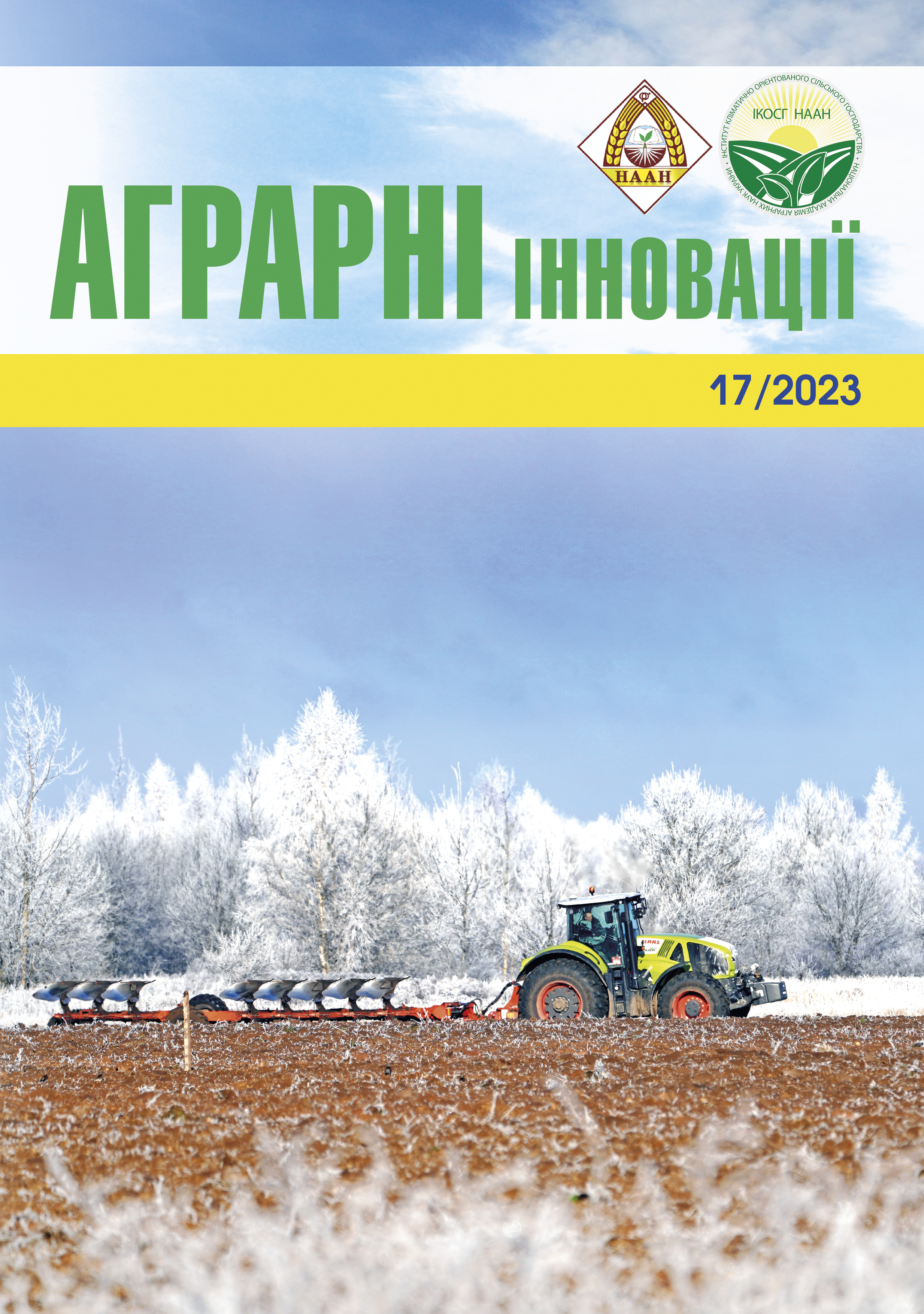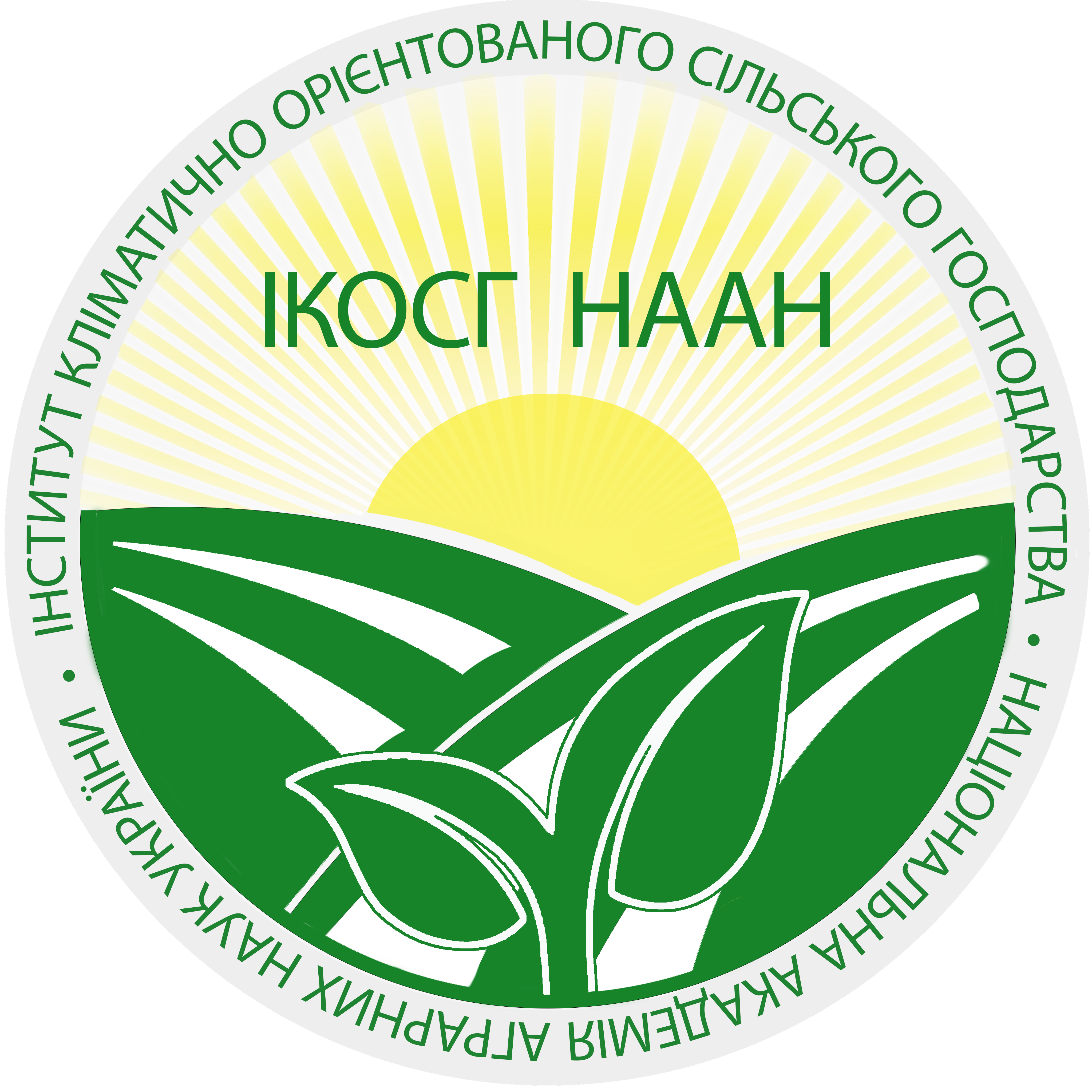ІРИГАЦІЙНІ ВЛАСТИВОСТІ ВОД І ЇХ МІНЛИВІСТЬ НА ПРИКЛАДІ ВОДНИХ ОБ‘ЄКТІВ ОДЕСЬКОЇ ОБЛАСТІ
Анотація
Мета досліджень полягає: в удосконаленні методики оцінки небезпеки іригаційного засолення ґрунту за показником суми токсичних солей в еквівалентах хлорид-іонів е(rCl–) (ДСТУ 2730:2015) та у випробуванні запропонованої методики при оцінці мінливості іригаційних властивостей вод. Методи. Аналіз емпіричного матеріалу на наявність грубих помилок, визначення статистичних характеристик рядів спостережень і параметрів законів розподілу показників якості вод виконано методами математичної статистики. Результати. Стаття є продовженням досліджень, опублікованих в попередньому номері журналу «Аграрні інновації» № 16. Відповідно мети досліджень оцінка іригаційних властивостей вод в роботі виконано за удосконаленою методикою ДСТУ 2730:2015 за критерієм е(rCl–), інші критерії не розглядались. В статті запропоновано детальна типізація іригаційних вод на основі типізації природних вод Альокіна О. А., удосконалення методики ДСТУ 2730:2015 та ймовірнісний підхід при оцінюванні якості іригаційних вод. За удосконаленою методикою виконано оцінка небезпеки засолення ґрунту при поливі водами річки Сарата, Кучурганського та Барабойського водосховищ. Для чого: для кожного водного об’єкту за результатами спостережень розраховані значення показника е(rCl–); встановлені параметри законів його розподілу; визначено ймовірність (тривалість сумарного періоду часу в частках від теплого періоду року (ТПР)) класу якості вод для різних типів ґрунтів. Встановлено: для піщаних і супіщаних ґрунтів води річки Сарата в нижній її частині відносяться до І або ІІ класу іригаційних вод протягом 40–50% ТПР, від 50 до 90% ТПР води непридатні для зрошення (клас ІІІ) для усіх типів ґрунтів; для піщаних та супіщаних ґрунтів води річки Сарата у верхній її частині належать до класу І протягом 90–95% ТПР, І або ІІ клас протягом 90–99% ТПР для піщаних, супіщаних, легко- і середньосуглинкових ґрунтів; навіть для глинистих ґрунтів І чи ІІ клас протягом 70% ТПР; води Кучурганського водосховища для піщаних та супіщаних ґрунтів протягом 80–85% ТПР відносяться до класу І, а до І або ІІ класу – 85–95% ТПР; для легко- і середньосуглинкових ґрунтів до класу І або ІІ – 80–90% ТПР; для важкосуглинкових і глинистих до класу І або ІІ – 60–75%; для глинистих ґрунтів до класу ІІІ – 40%; Води Барабойського водосховища за показником е(rCl–) придатні для зрошення усіх типів ґрунтів (клас І) протягом усього ТПР. Висновки. Протягом ТПР склад і властивості вод змінюються, тому при класифікації якості іригаційних вод доцільно визначати ймовірність класів якості. Води річки Сарата (с. Білолісся) за показником е(rCl–) практично непридатні для зрошення усіх типів ґрунтів. У верхній частині р. Сарата (с. Меняйлівка) іригаційні властивості вод значно покращуються: для піщаних, супіщаних, легкосуглинкових і середньосуглинкових ґрунтів відносяться до І або ІІ класу протягом 90–99% ТПР. Води потребують обережний підхід при поливі більшості типів ґрунтів. Води Кучурганського водосховища схожі (але трішки гірше) з водами р. Сарата (с. Меняйлівка): для піщаних, супіщаних, легко- і середньосуглинкових ґрунтів І або ІІ клас протягом 80–95% ТПР; для глинистих ґрунтів води відносяться до І або ІІ класів протягом 60% ТПР. Ці води потребують обережний підхід при поливі легко- і середньопроникних ґрунтів. За показником е(rCl–) використання вод Барабойського водосховища протягом ТПР можливе для поливу усіх типів ґрунтів без обмежень.
Посилання
2. Юрасов С.М., Кузьмина В.А. Іригаційна оцінка якості вод Сасику. Український гідрометеорологічний журнал. № 24. Одеса : ТЕС, 2019. C. 124–133.
3. Блажко А.П. Оцінювання іригаційних властивостей поверхневих вод в межах Дністровсько-Бузького межиріччя Одеської області за агрономічними критеріями. Вісник Одеської державної академії будівництва та архітектури. 2017. Вип. 66. C. 134–140.
4. Сидоренко Ф., Гуцул Т., Богдевич О. та ін. Довгострокові екологічні ризики забруднення басейну річки Дністер застарілими пестицидами. Матеріали міжнародної конференції «Інтеграція в ЄС та управління басейном річки Дністер», Кишинів, 8–9 жовтня 2020 р. Кишинів : Eco-TIRAS, 2020. С. 282–285.
5. Яров Я. С. Гідрохімічний режим та екологічний стан річки Барабой. Український гідрометеорологічний журнал. 2010. № 7. С. 200–210.
6. Яров Я.С. Оцінка якості води річки Барабой за гідрохімічними показниками. Вісник Одеського державного екологічного університету. 2012. Вип. 13. С. 177–186.
7. Ковалёва Н. В., Мединец И. В., Мединец С. В. Трофический статус вод Кучурганского лимана. Материалы международной конференции «Интегрированное управление трансграничным басейном Днестра: платформа для сотрудничества и современные вызовы. Тирасполь, 26–27 октября 2017 года. Тирасполь : Eco-TIRAS, 2017. С. 183–186.
8. Гидрохимические особенности двух контрастных (Дубоссарского и Кучурганского) водохранилищ / Касапова Л. В., Филипенко С. И., Руденко А. К., Калатинская М. А. Интегрированное управление трансграничным басейном Днестра: платформа для сотрудничества и современные вызовы : материалы международной конференции. Тирасполь, 26–27 октября 2017 года. Тирасполь: Eco-TIRAS, 2017. С. 164–166.
9. Якість природної води для зрошення. Агрономічні критерії / Національний стандарт України. ДСТУ 2730:2015. Київ: УкрНДНЦ. 2016. 10 с.
10. Караулов В.Д., наук. кер. Юрасов С.М. Аналіз мінливості іригаційних властивостей вод Кучурганського і Барабойського водосховищ. Аграрні інновації. Херсон : Видавничий дім «Гельветика», 2022. Вип. 16. С. 31–37.
11. Алёкин О. А. Основы гидрохимии. Ленинград : Гидрометеоиздат, 1970. 446 с.
12. Справочное руководство гидрогеолога. 3-е изд. перераб. и доп. Том. 1 / под ред. проф. В. М. Максимова. Ленинград : Недра, 1979. 512 с.
13. Зайдельман Ф. Р. Мелиорация почв: ученик. 3-е изд. испр. и доп. Москва : Изд-во МГУ им. М. В. Ломоносова, 2003. 448 с.
14. Аринушкина Е. В. Руководство по химическому анализу почв. Издание 2-е, переработанное и дополненное. Москва : Изд-во МГУ, 1970. 487 с.






